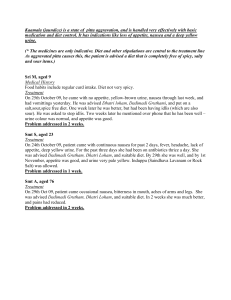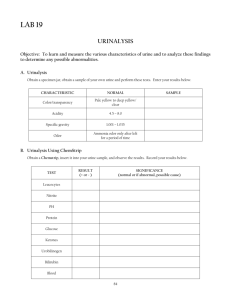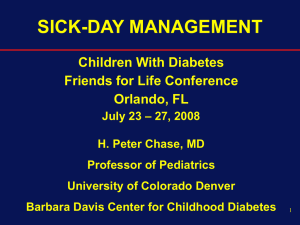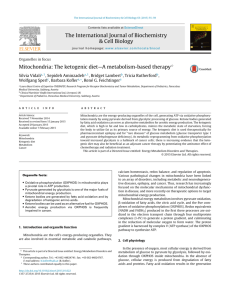Ketogenic Diet Inpatient Protocol
advertisement
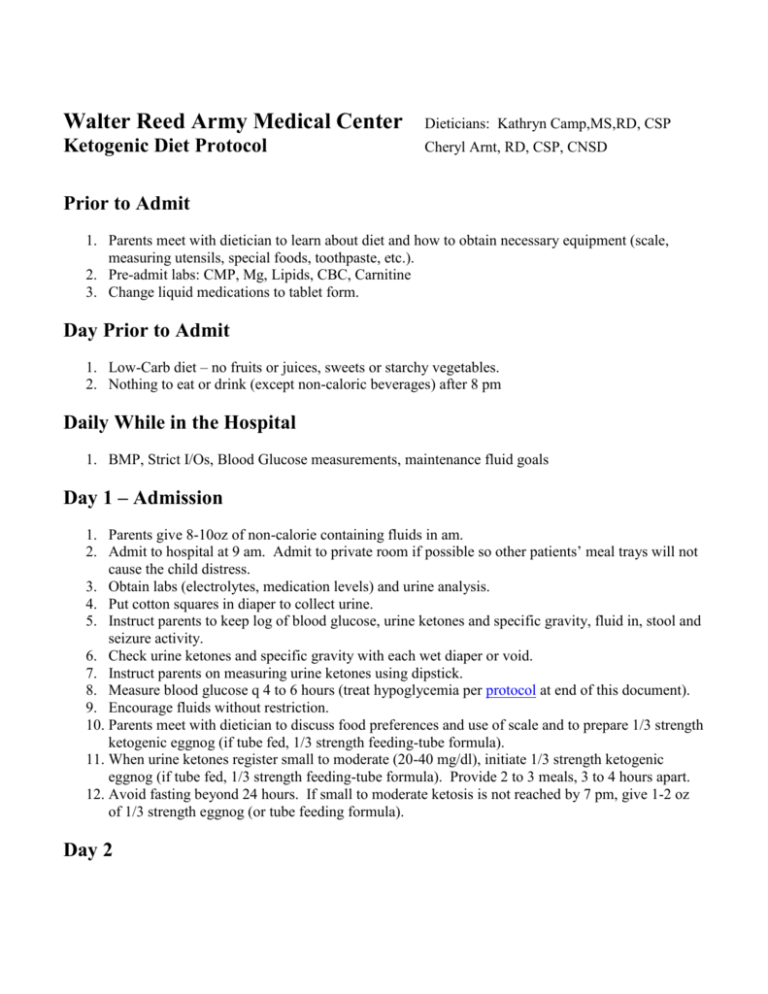
Walter Reed Army Medical Center Dieticians: Kathryn Camp,MS,RD, CSP Ketogenic Diet Protocol Cheryl Arnt, RD, CSP, CNSD Prior to Admit 1. Parents meet with dietician to learn about diet and how to obtain necessary equipment (scale, measuring utensils, special foods, toothpaste, etc.). 2. Pre-admit labs: CMP, Mg, Lipids, CBC, Carnitine 3. Change liquid medications to tablet form. Day Prior to Admit 1. Low-Carb diet – no fruits or juices, sweets or starchy vegetables. 2. Nothing to eat or drink (except non-caloric beverages) after 8 pm Daily While in the Hospital 1. BMP, Strict I/Os, Blood Glucose measurements, maintenance fluid goals Day 1 – Admission 1. Parents give 8-10oz of non-calorie containing fluids in am. 2. Admit to hospital at 9 am. Admit to private room if possible so other patients’ meal trays will not cause the child distress. 3. Obtain labs (electrolytes, medication levels) and urine analysis. 4. Put cotton squares in diaper to collect urine. 5. Instruct parents to keep log of blood glucose, urine ketones and specific gravity, fluid in, stool and seizure activity. 6. Check urine ketones and specific gravity with each wet diaper or void. 7. Instruct parents on measuring urine ketones using dipstick. 8. Measure blood glucose q 4 to 6 hours (treat hypoglycemia per protocol at end of this document). 9. Encourage fluids without restriction. 10. Parents meet with dietician to discuss food preferences and use of scale and to prepare 1/3 strength ketogenic eggnog (if tube fed, 1/3 strength feeding-tube formula). 11. When urine ketones register small to moderate (20-40 mg/dl), initiate 1/3 strength ketogenic eggnog (if tube fed, 1/3 strength feeding-tube formula). Provide 2 to 3 meals, 3 to 4 hours apart. 12. Avoid fasting beyond 24 hours. If small to moderate ketosis is not reached by 7 pm, give 1-2 oz of 1/3 strength eggnog (or tube feeding formula). Day 2 1. Start 2/3 strength eggnog (or tube feeding formula). Provide 3 meals, 3 to 4 hours apart (or as individually directed by dietician). 2. Limit fluids to the calculated fluid allotment. 3. Meal plans are calculated and gone over with the parents. 4. Continued parent education about diet preparation, use of scale, etc. 5. Measure blood glucose q 4-6 hours. 6. Measure urine ketones with each wet diaper and continue to record as above. 7. Obtain supply of dipsticks, submit prescriptions for any necessary supplements or medications in preparation for discharge. Day 3 1. 2. 3. 4. Full strength ketogenic diet, using whole foods (or formula). Continue monitoring as above. Provide discharge plan to parents (done by dietician). Discharge home late in the day or early the next day if child is stable and parents are comfortable with providing diet at home. Treating Hypoglycemia (if not symptomatic, there is no need to treat it) 1. If BG is 30-40 mg/dl and child appears well, watch closely and recheck in 2 hrs. 2. If BG drops below 25 mg/dl, watch child very closely. a. If older child with no symptoms, do nothing but continue to monitor. b. If younger child, give 30 cc of orange juice and check BG in 1 hr. Give another 30 cc of orange juice if necessary. 3. If symptoms of hypoglycemia occur (nausea, weakness, sweating, dizziness, pallor, rapid pulse or sleepiness), give 15-30 cc of orange juice. If no improvement, give another 15 cc in 1 hour. Remember that too much juice will delay or prevent ketosis. 4. If child has seizures or major changes in consciousness and BG drops below 25 mg/dl, begin D5 IVF immediately. WRAMC 1999

